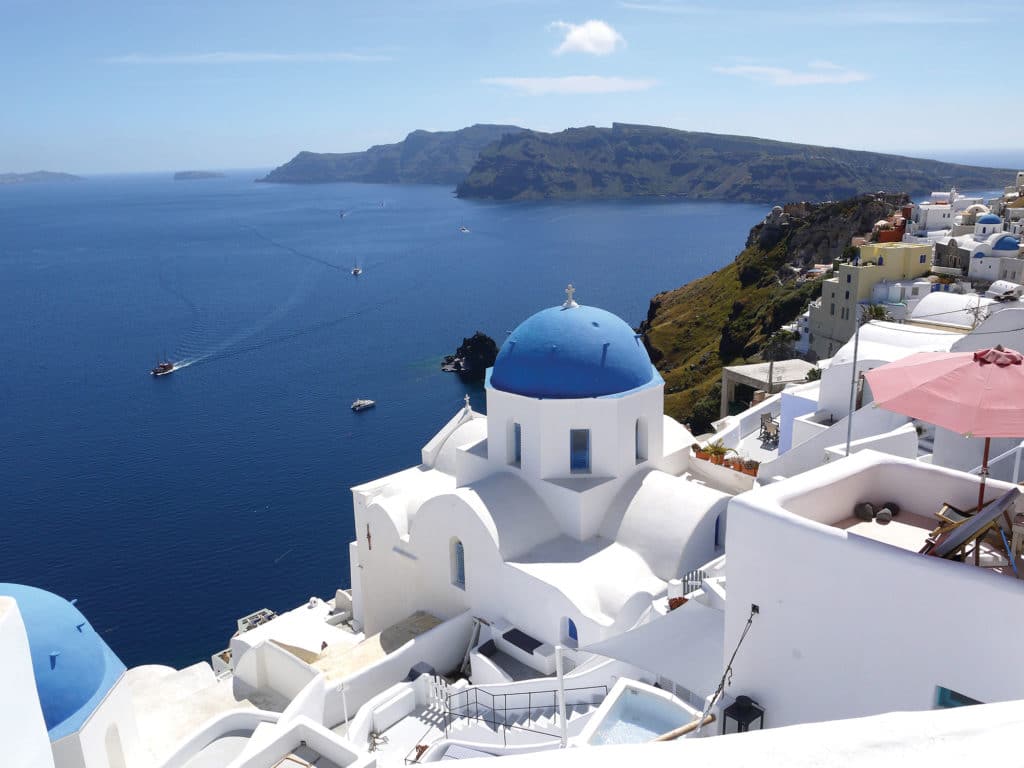
Santorini is probably the most photographed island in all of Greece, and it is easy to see why. The ancient and still-active volcano that forms the archipelago rises dramatically from deep sapphire seas with impressive rock and ash sandwiched together in great horizontal bands of black, gray and red. Each compressed layer is evidence of past eruptions, from the Minoan eruption—one of the world’s largest volcanic events in recorded history—blowing away the west side of the island around 1645 B.C., to the most recent burp in the mid-1900s.
These contrasting layers climb the island’s steep cliffs to meet rich fertile soil plateaus 600 feet above sea level. On these green terraces, row upon row of Santorini’s famous grapes catch the Mediterranean sun, and clusters of dazzling whitewashed houses reflect the light, and, from a distance, look like snowcapped mountains.
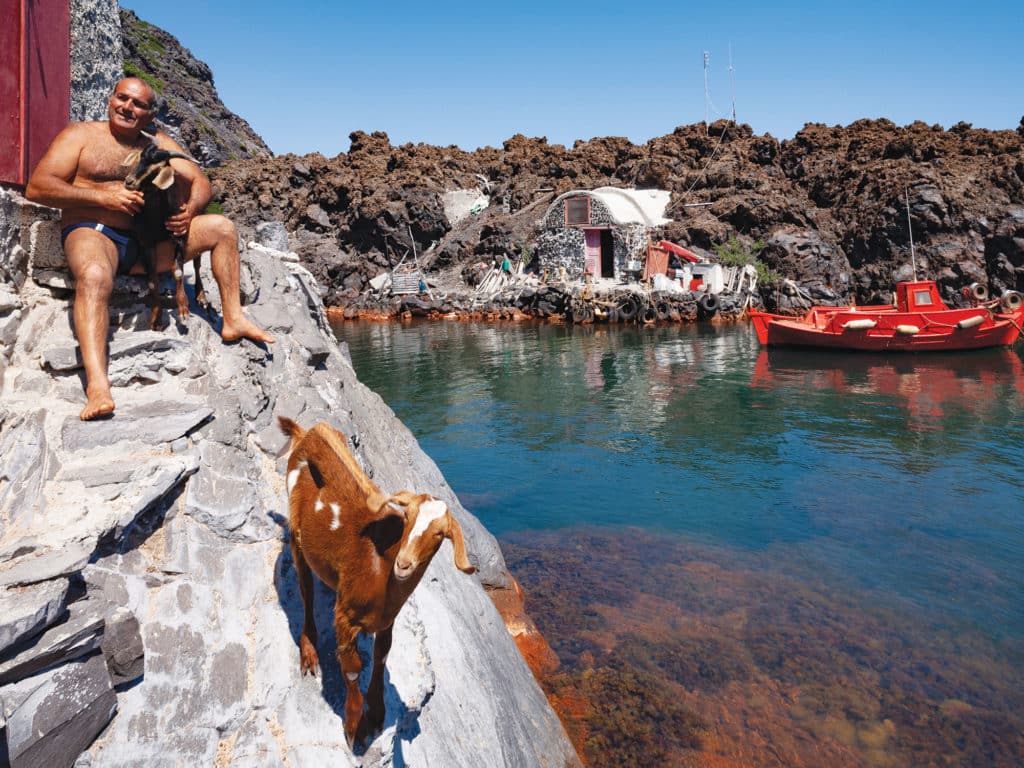
My wife, Catherine, and I had been sailing in the Mediterranean Sea for only three months, but Greece was unlike any other country we have cruised since we set sail from New York more than 12 years and 40,000 nautical miles ago. In fact, so entirely captivating are these islands, they have already joined the honored ranks of our most memorable cruising regions in the world, rating among the legendary archipelagoes of French Polynesia, New Caledonia, Australia and Indonesia.
RELATED: Sailing into Yialos, Greece
No visit to Greece would really be complete without feasting your eyes on Santorini, an island so striking that it is regularly featured to represent the entire country. We detoured south in favorable northeasterly wind only to find that due to the island’s overwhelming popularity, the one and only marina on the southern shore is now home base to a large fleet of local charter catamarans. A quick call on the VHF confirmed that there was absolutely no room for the likes of Dream Time, our 38-foot Cabo Rico. We arrived as the entire fleet was departing for the evening’s sunset cruise, and watched as a convoy of more than 20 45-foot catamarans, each heavily adorned with tourists, motored full steam along the rugged southern coastline before swinging north to enter one of the world’s largest sunken calderas. Dream Time fell in line but was quickly left behind.
During our day ashore, Catherine and I discovered that the best part of Santorini, at least for us, was indeed the view.
Santorini is truly stunning, but the combination of steep cliffs, a deep rocky seabed, and shorelines exposed to wind and swell makes it less than ideal for mariners and a tad tricky to anchor, especially if you wish to leave your boat unattended. With fading light and uncomfortable southwesterly seas wrapping around the island, there were few options as to where to spend the night, so using a trip line to retrieve our ground tackle if needed, we anchored inside the 5-mile-wide caldera on the edge of a petrified lava plug. As the last of the charter catamarans returned south to the marina, Dream Time was left alone, anchored under a clear canopy of stars off the “burnt islands”—Nea Kameni and Palea Kameni, mountainous heaps of jagged volcanic rock in the center of the caldera.
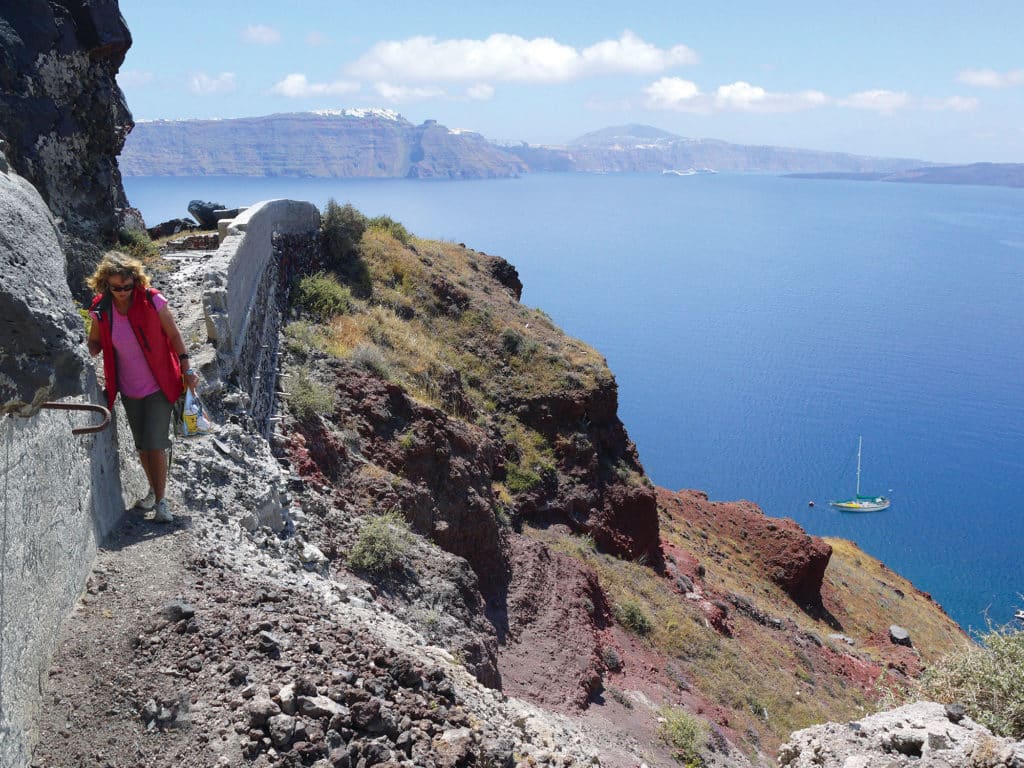
The next morning, we reclaimed our anchor from the rocky bottom (trip line not required) and set off to find Dream Time a safe berth for the day. We sailed from the lava islands in the middle of the caldera to the village of Oia (pronounced EE-ah), just 3 miles away on the northern rim, where we quickly made friends with Capt. Cosmos, a colorful character and local charter-boat owner, who kindly offered the use of his mooring for the day while he ferried a group of tourists around the caldera and outer shoreline.
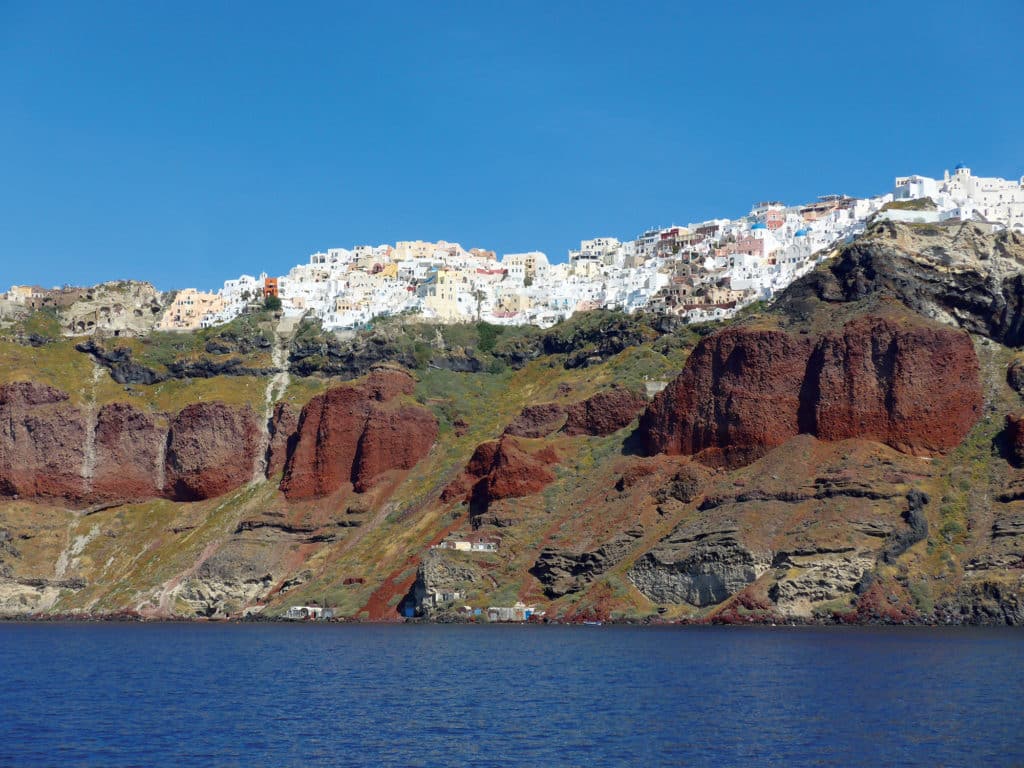
During our day ashore, Catherine and I discovered that the best part of Santorini, for us at least, was indeed the view. After touring the island in a rented Fiat 500 and stocking up on supplies (which included a few choice bottles of Santorini red), we enjoyed a two-hour lunch perched on a balcony with a panoramic view of the crater, with cruise ships moored in the distance and Dream Time berthed just below. The scene—complete with two Byzantine church domes painted sky-blue and a peach-colored bell tower nestled among a canopy of white roofs overlooking the caldera—is one of the most famous in all of Greece.
We returned to Dream Time just 15 minutes before Capt. Cosmos arrived to reclaim his mooring, and in a light westerly wind, we unfurled our genoa to sail the 3 miles south back to the lava islands. We hooked a mooring surrounded by a mass of shiny black boulders in a tiny cove on Palea Kameni (Old Burnt Island), and as we settled in for the night, we were surprised to discover an old fisherman living alone among the heaps of volcanic slag.
Tourists packed the island to capacity while Dream Time lay at rest in a volcanic wasteland, anchored on the edge of a lava island.
The fisherman’s house, which appeared not much larger than a garden shed, was built within the side of a lava flow. With its tidy, curved whitewashed roof and chunky stone walls, it expressed all the quirky charm of a Hobbit home. His two fishing boats were tucked in comfortably, moored just a few feet from the rocky shoreline, and each were painted yellow with matching orange accents, providing cheery contrast to the otherwise black surroundings. Scattered around his property were carefully stacked piles of collected debris: sheets of corrugated iron, heaps of old rope, darkened timber, tires, nets and tools. From our cockpit, we watched as the lone fisherman shuffled slowly around the rocks that surround his life, followed closely by his dog, a giant German shepherd, who eyed us with suspicion, anchored so near to his territory.
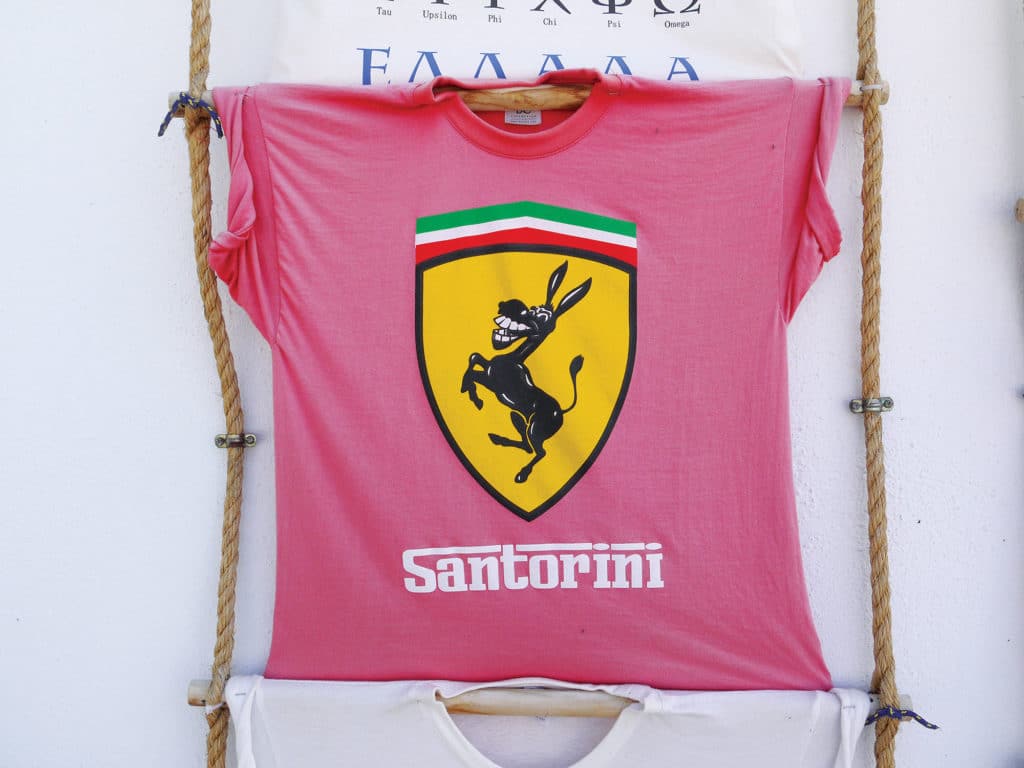
It was a most peaceful yet surreal setting; just across the caldera, thousands of cruise-ship passengers and tourists packed the island and resorts to capacity while Dream Time lay at rest in a volcanic wasteland, anchored on the edge of a lava island, home to a Greek fisherman.
The next morning, we raised our mainsail with the sun. As we sailed away, we noticed the old fisherman was sprinkling grain on the stony ground, whistling softly to call goats that hopped down from the black rocks above and gathered around him to feed outside his little house, which rests alone in the center of an active volcano, surrounded entirely by the sea.
To read more about Neville and Catherine Hockley’s world voyage, visit: zeroXTE.com.








